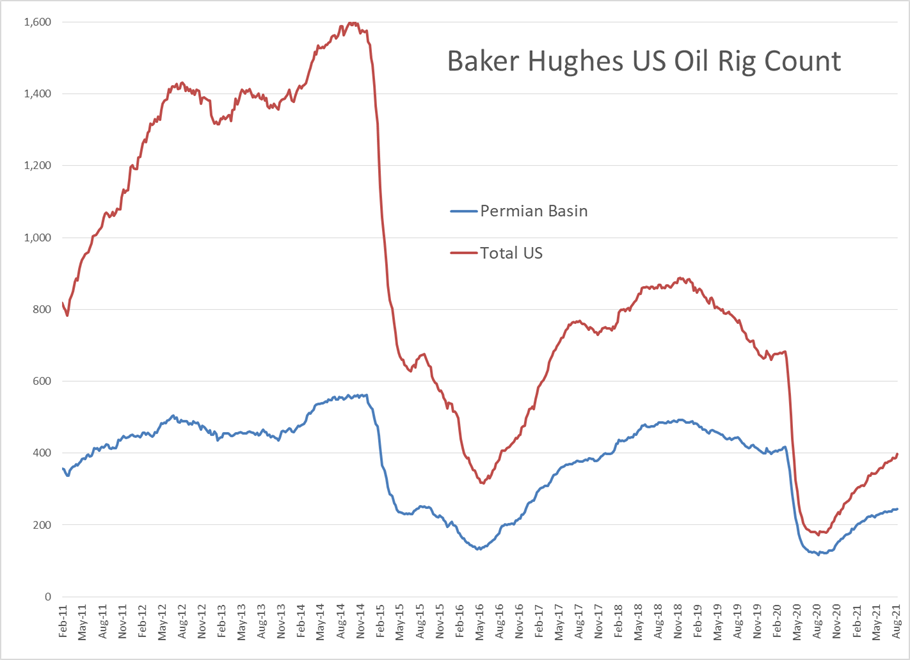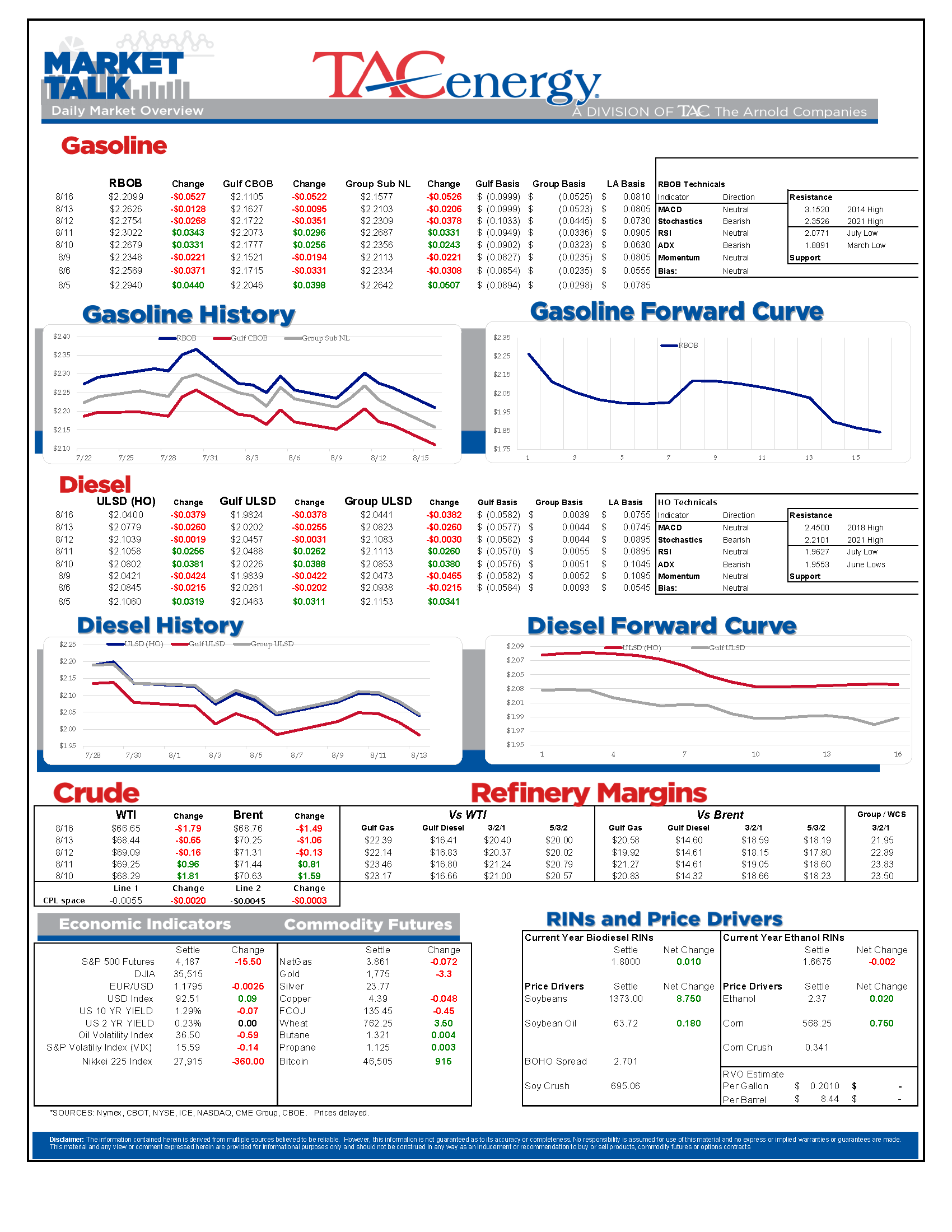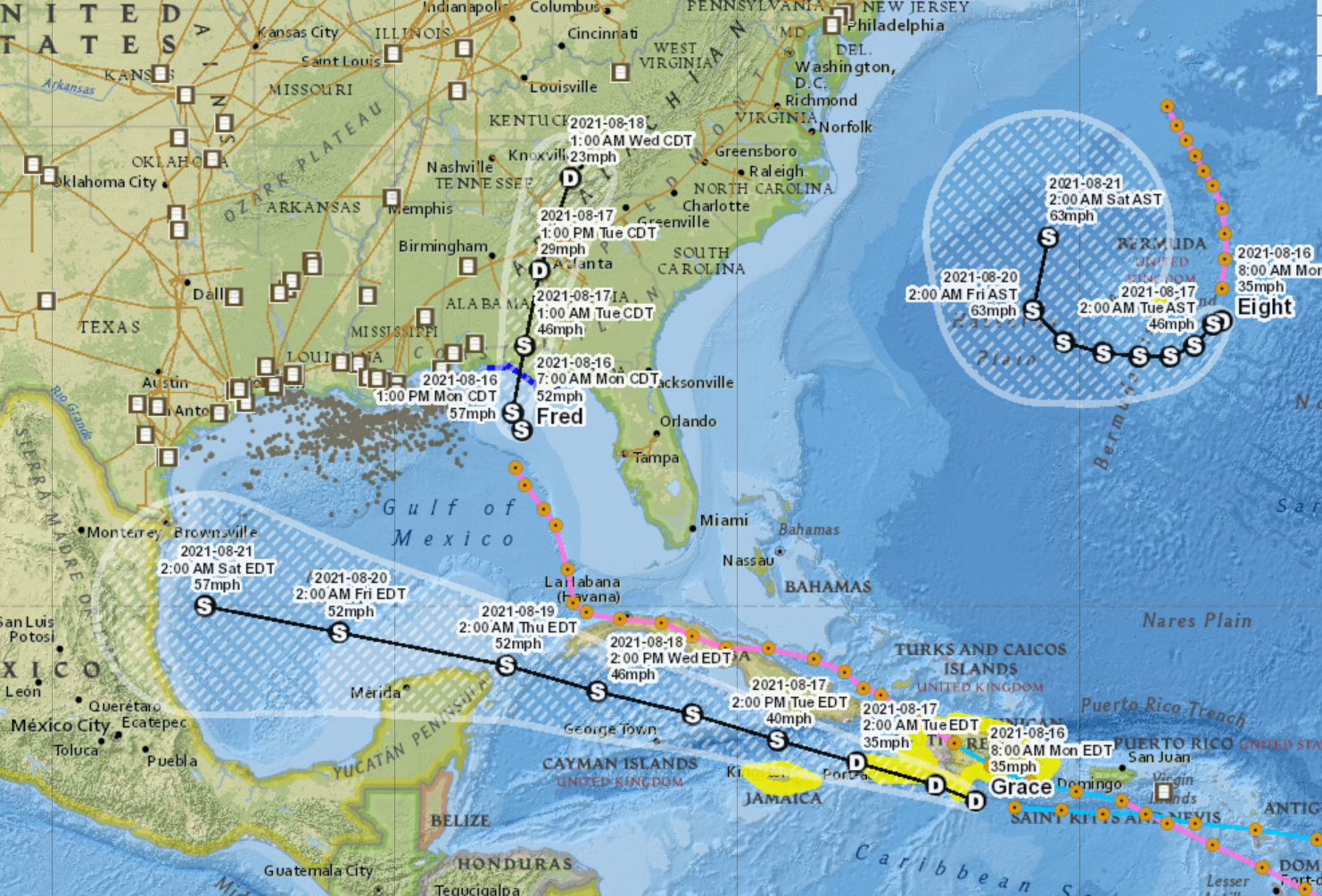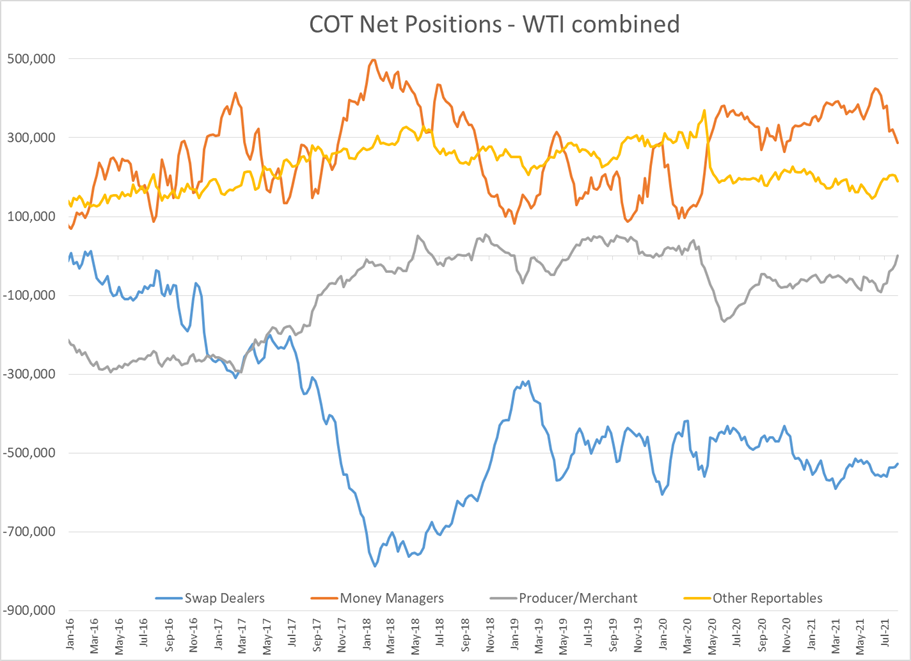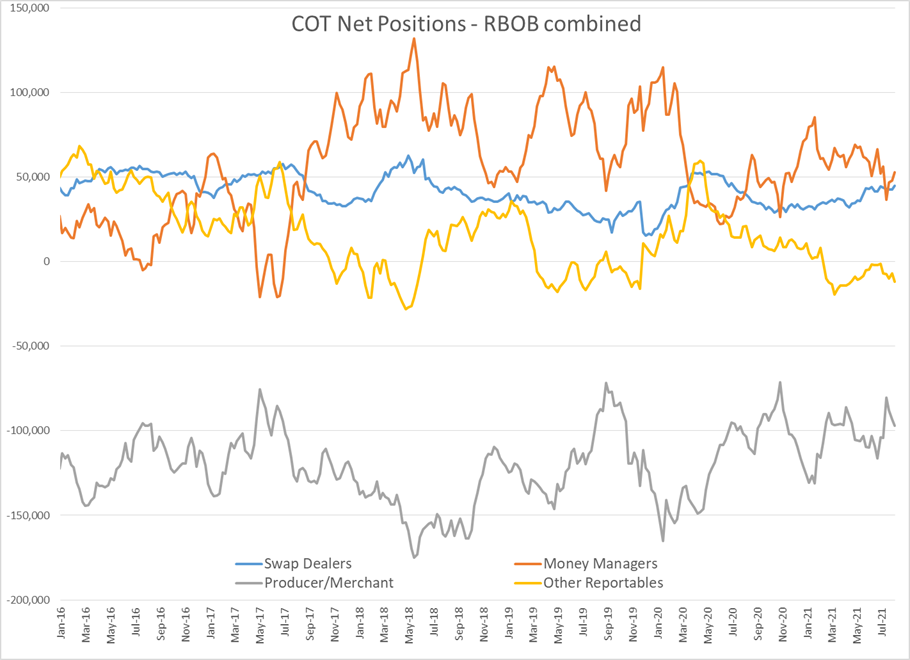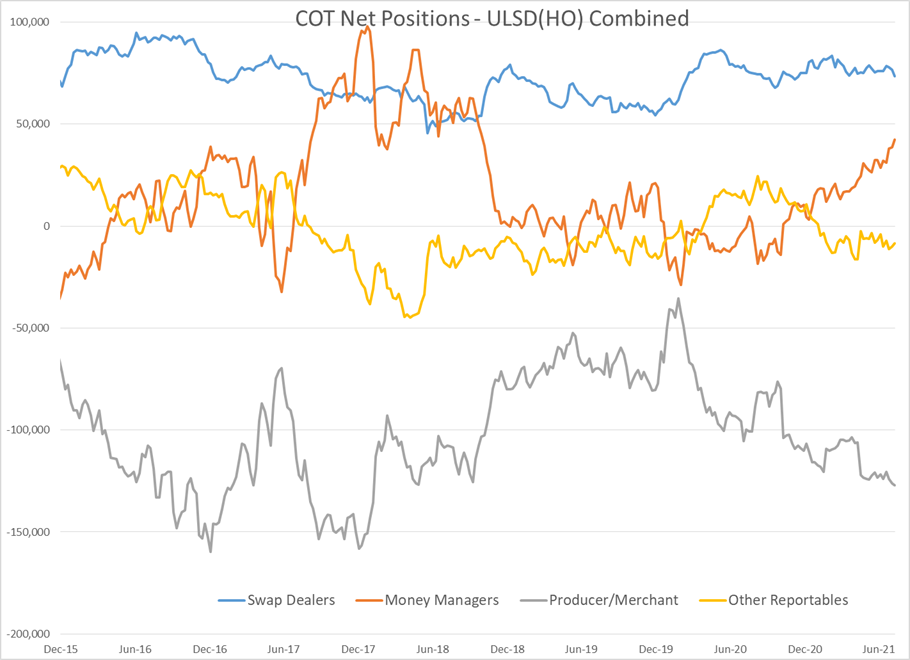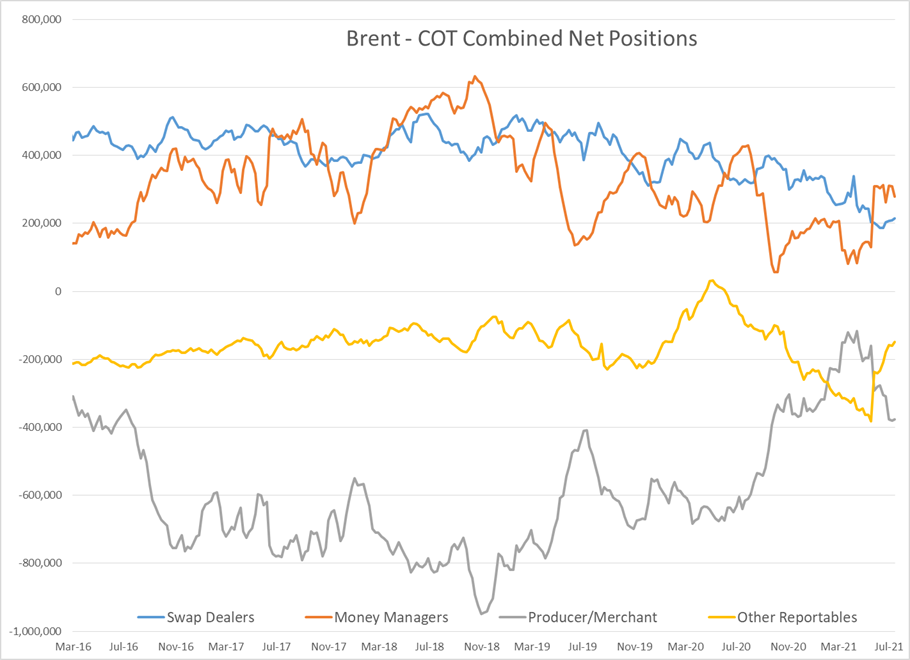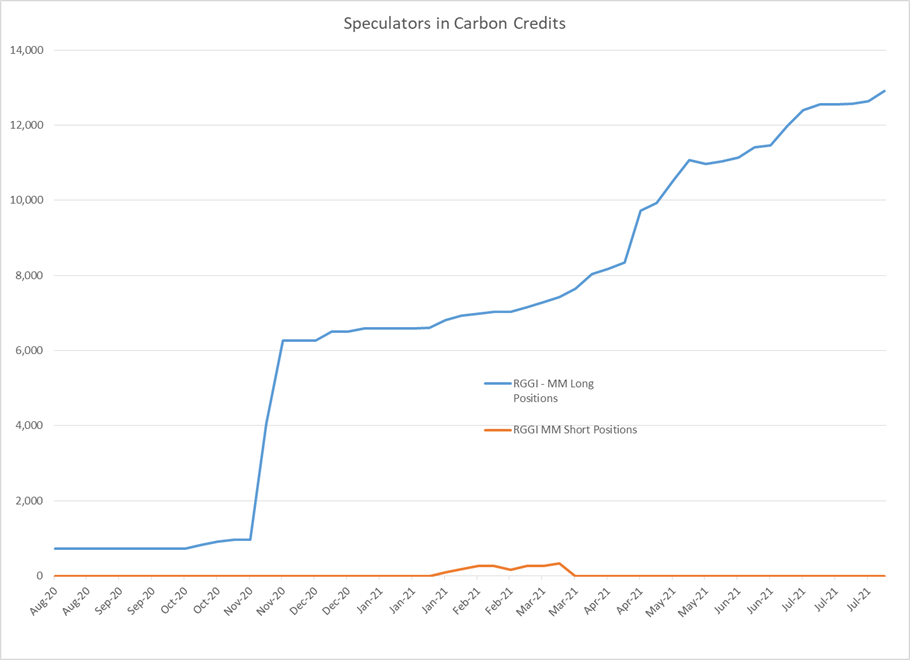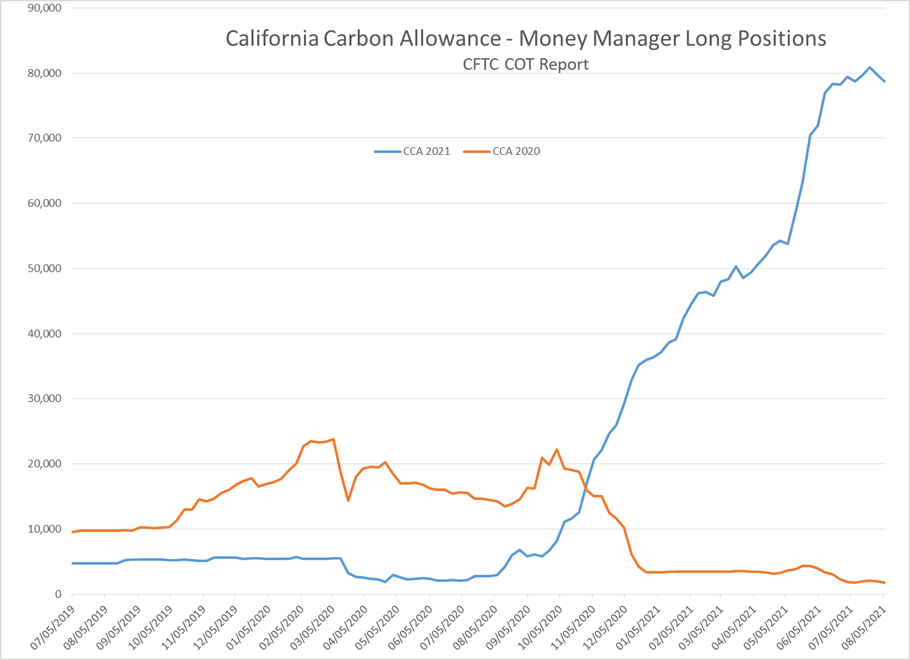Another Monday Selloff For Energy Futures

It’s another Monday selloff for energy futures as traders had plenty of time over the weekend to get worried about how the rapid spread of the Delta variant might impact fuel demand. 4 out of the past 5 Mondays have seen gasoline prices drop at least 6 cents, and today’s early action threatens to do much more than that if we take out last Monday’s low trades near $2.17, which would open up another 10 cents of downside potential near term. ULSD looks like it has less of a technical trap door than RBOB, with near term support at $2.00 and $1.96.
Tropical storm Fred is about 100 miles off the Florida Panhandle this morning, and is expected to bring heavy rains across the South East after making landfall later today, but should not be a major factor on supply infrastructure. TS Grace was on track to hit Florida based on Friday’s models, then shifted west over the weekend and looked to be a threat to Houston Sunday, but the latest models have shifted West again and have it pointing towards Mexico, and not a refinery threat at all. Tropical Storm Henri is expected to be named later this morning, and is forecast to circle Bermuda, but doesn’t look to be a threat to the US coast at this time.
Money managers were bailing out of crude oil positions last week, but adding to length in refined products. The Net length in WTI dropped to its lowest level since November last week, after reaching a 3 year high in June. We have not yet seen a snowball effect of selling creating selling as speculators have to meet margin calls, when their bets on higher prices go wrong, but if WTI breaks below $65, that could be coming. ULSD length held by money managers pushed to the highest level since November 2018 last week, which probably means some hedge funds are wanting a do-over this morning.
Baker Hughes reported 10 more oil rigs were put to work last week, bringing the US total to a fresh 16 month high. The gains were spread across the country with the Williston basin adding 4 rigs, Eagle Ford 3, and 1 each for a few others including the Permian.
Click here to download a PDF of today's TACenergy Market Talk.
News & Views
View All
Energy Futures Are Caught Up In Headline Tug-O-War This Morning
Energy futures are caught up in headline tug-o-war this morning with Canadian oil production concerns and a positive US GDP report trying to push prices higher while sinking Chinese demand worries and Gaza ceasefire hopes are applying downward pressure. The latter two seem to be favored more so far this morning with WTI and Brent crude oil futures down ~45 cents per barrel, while gasoline and diesel prices are down about half a cent and two cents, respectively.
No news is good news? Chicago gasoline prices dropped nearly 30 cents yesterday, despite there not being any update on Exxon’s Joliet refinery after further damage was discovered Wednesday. Its tough to say if traders have realized the supply situation isn’t as bad as originally thought or if this historically volatile market is just being itself (aka ‘Chicago being Chicago’).
The rain isn’t letting up along the Texas Gulf Coast today and is forecasted to carry on through the weekend. While much of the greater Houston area is under flood watch, only two refineries are within the (more serious) flood warning area: Marathon’s Galveston Bay and Valero’s Texas City refineries. However, notification that more work is needed at Phillip’s 66 Borger refinery (up in the panhandle) is the only filing we’ve seen come through the TECQ, so far.
Premiums over the tariff on Colonial’s Line 1 (aka linespace value) returned to zero yesterday, and actually traded in the negatives, after its extended run of positive values atypical of this time of year. Line 1’s counterpart, Line 2, which carries distillates from Houston to Greensboro NC, has traded at a discount so far this year, due to the healthy, if not over-, supply of diesel along the eastern seaboard.
Click here to download a PDF of today's TACenergy Market Talk.

WTI And Brent Crude Oil Futures Are Trading ~$1.50 Per Barrel Lower In Pre-Market Trading
The across-the-board drawdown in national energy stockpiles, as reported by the Department of Energy yesterday, stoked bullish sentiment Wednesday and prompt month gasoline, diesel, and crude oil futures published gains on the day. Those gains are being given back this morning.
The surprise rate cut by the People’s Bank of China is being blamed for the selling we are seeing in energy markets this morning. While the interest rate drop in both short- and medium-term loans won’t likely affect energy prices outright, the concern lies in the overall economic health of the world’s second largest economy and crude oil consumer. Prompt month WTI and Brent crude oil futures are trading ~$1.50 per barrel lower in pre-market trading, gasoline and diesel are following suit, shaving off .0400-.0450 per gallon.
Chicagoland RBOB has maintained its 60-cent premium over New York prices through this morning and shows no sign of coming down any time soon. Quite the opposite in fact: the storm damage, which knocked Exxon Mobil’s Joliet refinery offline on 7/15, seems to be more extensive than initially thought, potentially extending the repair time and pushing back the expected return date.
There are three main refineries that feed the Chicago market, the impact from one of them shutting down abruptly can be seen in the charts derived from aforementioned data published by the DOE. Refinery throughput in PADD 2 dropped 183,000 barrels per day, driving gasoline stockpiles in the area down to a new 5-year seasonal low.
While it seems all is quiet on the Atlantic front (for now), America’s Refineryland is forecasted to receive non-stop rain and thunderstorms for the next four days. While it may not be as dramatic as a hurricane, flooding and power outages can shut down refineries, and cities for that matter, all the same, as we learned from Beryl.

